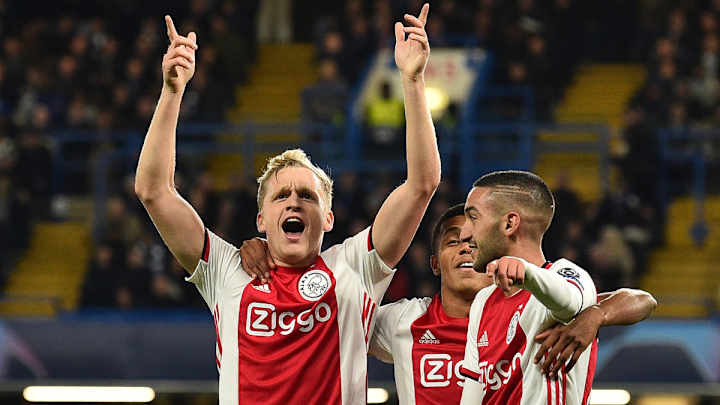The Fit, Fee and Process of Donny van de Beek's Transfer All Check Out for Manchester United

Perhaps the most telling aspect of Manchester United’s signing of Donny van de Beek from Ajax is not that it happened but the way it happened. Since Sir Alex Ferguson left, and perhaps before, United has been a club whose struggles could be mapped in its transfer dealing. It bought aging stars at high prices. It overstuffed some areas of the squad while neglecting others. It became involved in protracted wrangling, then ended up being forced into paying what the selling club wanted anyway.
Things have changed this year. It’s true that Bruno Fernandes was signed only right at the end of the January window and for essentially what Sporting wanted, but his impact was immediate. He scored goals, he ran the midfield and he suddenly gave a semblance of coherence to the rest of the squad. Since then, the process of rationalization has continued. Alexis Sánchez and Cameron Borthwick-Jackson have both been offloaded on free transfers. The pursuit of Jadon Sancho continues. And then, almost without warning, Van de Beek was signed.
That United was interested in the 23-year-old was no secret, but then so were a lot of clubs. Before lockdown, he had looked likely to join Real Madrid. Then this week it suddenly became apparent he was moving to Old Trafford. This is the way transfers should be done, decisively and swiftly, without the weeks of speculation and negotiation that preceded, for instance, United’s signing of Harry Maguire last year. What’s not yet clear is how willing a role Madrid played in this: did United leap in to steal Van de Beek, or had Madrid, finances straining under the pandemic, cooled on him? Is the economic downturn being felt more keenly in Spain than in the Premier League?
Central midfield did not seem like an obvious priority for United, which has led to immediate speculation that Paul Pogba will be leaving. He and Van de Beek would seem to occupy similar positions on the pitch: both are technically accomplished box-to-box players with a propensity for making late runs. Perhaps Pogba will go, and that had certainly been his intention at this time last year. But his agent Mino Raiola has been unusually clear in saying Pogba now wants to stay, and in the new financial world, it’s not clear which club that could afford him would really want him.
There’s no reason Pogba and Van de Beek should not play together. Both may prefer the hybrid role in a 4-3-3, being neither the pivot at the base of midfield nor the Fernandes-style creator, but both are flexible. There’s no reason the two shouldn’t operate together outside a holder–Nemanja Matić or Scott McTominay–which would relieve some of the burden on Fernandes, who looked exhausted by the end of last season. Equally, at least against lesser opposition, Pogba can hold, and it may be that Van de Beek can too.
But that’s assuming a 4-3-3 or 4-2-3-1. The signing gives manager Ole Gunnar Solskjaer the option of playing with a midfield diamond, with Fernandes at its peak, Matic or McTominay holding and Van de Beek and Pogba shuttling on the outside. In fact, rather than Pogba, the player who seems most likely to be affected by this is Fred.
Then there’s the fee. Nobody quite knows what will happen to the market as the crisis continues, but $53 million is a bargain on the price scale of a year ago, which is why Madrid’s retreat raises so many eyebrows. Van de Beek’s contract expires next summer, and Ajax was keen to sell him in this window when he would still command a decent fee. It may be that although central midfield wasn’t a top priority, United decided that when a player of Van de Beek’s quality and age was available for, relatively, so little, it was worth adding an extra option—especially when considering that squad depth will be even more important than usual in this compressed upcoming season.
It probably helps as well that Ajax’s CEO is former United goalkeeper Edwin van der Sar—and Van de Beek himself said that he consulted both Van der Sar and former United and current Ajax left back Daley Blind before agreeing to the deal.
But that’s how transfers should work, clubs using their networks to act ruthlessly when a player of quality who will improve them becomes available, even if he isn’t on the immediate shortlist. United probably still needs a left back and a central defender, and Sancho would, of course, improve the roster. Doubts remain about Solskjaer's ceiling as a manager, but this is getting very close to a squad that should be a title contender.

An accomplished author of multiple books, Jonathan Wilson is one of the world’s preeminent minds on soccer tactics and history.